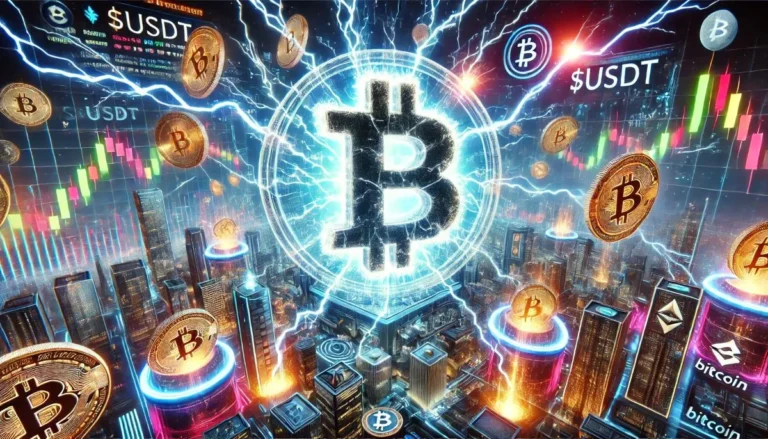
Binance Coin (BNB): The Utility Token Driving Crypto Transactions
Binance Coin (BNB) serves as the native utility token of the Binance cryptocurrency exchange. Initially launched in 2017 as an ERC-20 token on the Ethereum blockchain, it later transitioned to Binance Chain for improved scalability and utility. BNB’s primary appeal lies in its multifaceted use cases, both within the Binance ecosystem and beyond. From transaction fee discounts to token burns and broader adoption, BNB continues to solidify its position as a cornerstone in the crypto world.
BNB’s Core Utility: Transaction Fee Discounts
One of the primary reasons BNB remains the preferred token for crypto transactions is its fee-reduction benefits on the Binance exchange. Users who hold BNB can save significantly on trading fees:
- Binance offers a 25% discount on trading fees for users who pay with BNB.
- Fees are tiered based on a user’s 30-day trading volume and BNB holdings. For instance, at lower tiers (under 50 BTC), fees are reduced to 0.075% (down from 0.1%) when using BNB.
- Higher trading volumes and BNB holdings result in even greater fee discounts, incentivizing frequent traders to adopt BNB.
This mechanism not only benefits users financially but also boosts demand for Binance Coin, which may positively impact its value over time.
Token Burn: BNB’s Deflationary Model
Binance employs a unique token burn mechanism to maintain scarcity and potentially enhance BNB’s value. Every quarter, Binance uses 20% of its profits to buy back and permanently remove BNB tokens from circulation. The goal is to reduce the total supply to 100 million tokens.
For instance, in the latest token burn, Binance removed 1,099,888 BNB worth over $600 million, effectively reducing supply by around 5%. This deflationary model makes each remaining token scarcer, which can lead to long-term price appreciation.
Growing Adoption: BNB Beyond Binance
While BNB’s primary utility lies within the Binance ecosystem, its use cases have expanded across industries, further enhancing its value:
- Travel and Bookings: Partnerships with platforms like TravelbyBit and Travala allow users to pay for flights and hotels using BNB.
- Gift Cards and Retail: Platforms like Bidali enable purchases of gift cards for major retailers such as Amazon and Starbucks using BNB.
- Real Estate Payments: Some property developers now accept BNB for real estate transactions, showcasing its versatility.
These developments highlight BNB’s growing acceptance as a legitimate medium of exchange, appealing to both businesses and mainstream users.
BNB in the Binance Ecosystem: DeFi and Beyond
BNB’s utility extends further through its integration across Binance’s growing ecosystem:
- Collateral for Loans: Users can leverage BNB as collateral on Binance-owned platforms like Venus, unlocking borrowing capabilities for other cryptocurrencies or stablecoins.
- Binance Smart Chain (BSC): As Binance’s Ethereum-compatible blockchain, BSC has become a hub for decentralized finance (DeFi) projects, including platforms like PancakeSwap and BakerySwap, where BNB serves as a utility token.
These integrations cement BNB as a critical asset within the decentralized finance sector, driving additional demand and utility.
Lightchain AI: Combining AI with Blockchain Innovation
In parallel to Binance Coin’s established role, emerging projects like Lightchain AI are pushing boundaries by integrating artificial intelligence with blockchain technology. Key innovations introduced by Lightchain AI include:
- Proof of Intelligence (PoI): A consensus mechanism rewarding nodes for performing AI computations, boosting network efficiency and scalability.
- Artificial Intelligence Virtual Machine (AIVM): A transformative environment for AI-driven decentralized applications (dApps), enabling real-time analytics and adaptive functionalities.
By addressing scalability, privacy, and transparency challenges, Lightchain AI is positioning itself as a forward-thinking platform for developers and enterprises.
Lightchain AI Presale vs Binance Coin: A Comparison
Lightchain AI (LCAI) offers early investors an opportunity to acquire tokens at discounted rates during its presale, presenting a high-risk, high-reward investment. Its focus on AI-powered blockchain solutions introduces significant innovation, which could drive substantial growth in the future.
Binance Coin (BNB), on the other hand, provides stability and proven utility, offering consistent benefits such as trading fee discounts, token burns, and growing adoption within Binance’s ecosystem. For investors seeking established performance, BNB remains a reliable choice, while Lightchain AI appeals to those targeting groundbreaking, early-stage projects.
Wrapping Up
Binance Coin (BNB) has solidified itself as one of the most valuable utility tokens in the crypto market, thanks to transaction fee reductions, token burns, and widespread adoption both within and outside the Binance ecosystem. Its role in DeFi platforms further enhances its demand and utility, positioning BNB for long-term growth.
Meanwhile, innovative platforms like Lightchain AI demonstrate the exciting potential of combining artificial intelligence and blockchain technology. As the crypto landscape continues to evolve, investors have the opportunity to balance stability with innovation by exploring both established assets like BNB and emerging projects like Lightchain AI.





